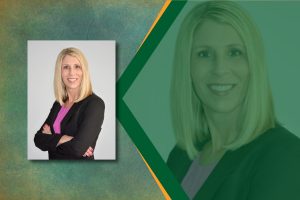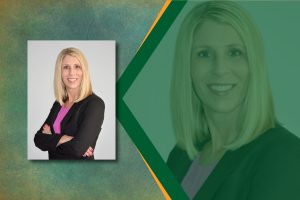
The CBD marketplace grows more crowded by the day, with manufacturers struggling to gain market share in a sea of CBD products all claiming to be the most effective.
That makes branding and marketing essential for even a savvy cannabis entrepreneur hoping to gain traction in a confusing and congested market, where every product starts to look alike.
Cindy Blum knows how to do it.
A marketing expert who has found a way to give consumers emotional connections to products as everyday as orange juice and chewing gum, Blum is now vice president of marketing for the CBD portfolio, Elevate, at Axcentria Pharmaceuticals in Telford, Pennsylvania.
Blum will share her strategic marketing tips with cannabis executives at MJBizCon next week in Las Vegas.
Hemp Industry Daily caught up with Blum to find out what she’s going to tell the CBD industry on Dec. 13 about building a brand from scratch.
You say that consumers buy brands, not products. What does that mean?
Products are functional. When we go out for a product or a service, we’re looking to fulfill some type of want or need.
Products get us to the shelf. Brands are what people actually connect with.
Brands are set up to have specific values, to have a personality. They have a purpose, they have a mission, they have values, and they have both a functional and an emotional promise.
There’s a very big difference between the functional and the emotional. When brands are set up correctly, they’re set up to really resonate with a shopper and create an emotional connection beyond just filling some type of need.
So, when you look at the cereal category, it might say, this is for heart health.
Let’s say Cheerios and heart health. That’s a very functional need. The emotional promise there is, you can be healthy and live a long life and play with your grandkids. It’s a brand you can connect with.
How does this apply to CBD?
At a very basic level, products are very interchangeable, especially when we look at the CBD market.
If you have Quality CBD Oil A and Quality CBD Oil B, to the consumer, there’s no difference, right? It’s an oil.
The brand is what really helps set that product apart and what people actually become loyal to.
What sort of product is CBD? What kind of personality would it have?
I believe it can fall into multiple categories.
At its core, CBD is absolutely medicinal. We look at the studies saying it helps relieve pain and inflammation. It can help with anxiety; it can help with sleep. Those are need-based. That’s what you go to the pharmaceutical aisle for.
However, when you look at some of the other things that CBD can do, when we think about inflammation, that relates to skin. That suddenly takes you into a world of things like acne, skin irritation, eczema, psoriasis. Those can very much be positioned as beauty.
I wouldn’t get hung up as much on what category CBD falls into but, rather, knowing what your brand is going to stand for, what problems you want to try to solve with it, and how you position your brand in the market.
An oil is an oil. A cream is a cream. It’s how you’re going to position it and how you’ll move forward with product development that will help you position to the consumer and kind of fall into one category.
Where do you begin?
The very first step is figuring out those broad foundations of who you’re going to be. Make sure that you’re clear on your “why.”
Why are you doing what you’re doing? That “why” will guide everything else that you do. People buy into that. Like I said, a product is functional. Shoppers buy into what you’re doing and why you’re doing it.
I always say, start off with a vision. That two-year and five-year and then maybe 20-year vision.
Know where you want to end up. Know what success will look like and build toward that. If you understand that, that will get you on a very good starting path to form everything else.
You’re an expert in pricing strategy. CBD is a brand-new market. How do you decide how to price it?
Decide who your key competitors are and what their pricing looks like and how it differs from the rest of the category or how it’s similar to the rest of the category. And use that as a starting point.
Just understanding what the market conditions look like today is a really good starting point.
Then I always say, create your (profit and loss statement) for every product.
So when you look at your profit and loss statement, you’re looking at things like your product costs, your overhead costs, your salaries.
Then you understand where you need to be priced to get the right revenue.
Just be prepared to be flexible. If market prices start to drop, you better be sure that you can afford a drop. If costs go up, that eats into your profit.
You’ve got to be ready to pivot, because I can be quite certain we’re going to pivot a lot in CBD. It’s just too new to really understand where pricing will settle 10 years from now or five years from now.
Flexibility will be needed. Make sure that you are offering a competitive price to your shoppers and still making enough profit to be flexible.
This interview has been edited for length and clarity.
Kristen Nichols can be reached at [email protected]


